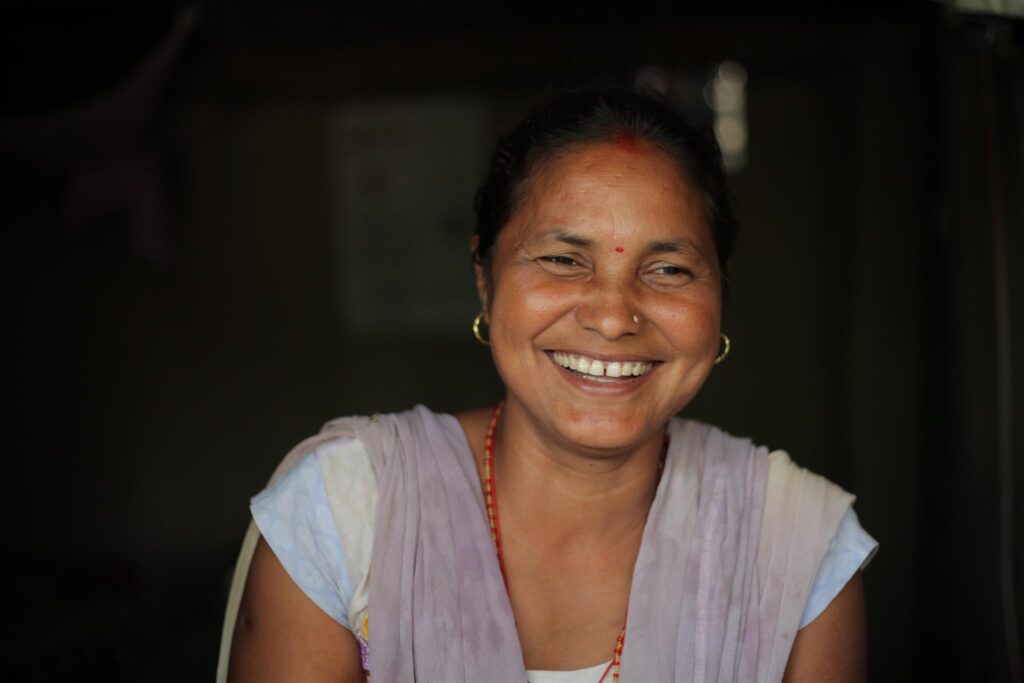Findings from a post-shock monitoring study
Blog post by Arzu Culhaci, Mercy Corps
_________________________________________________________________________
A quiet, somber look flickers across Laxmi Magar’s face, abruptly replacing the warm and settled smile that was there just moments ago. The subject of last August’s devastating floods has quickly changed the mood, and understandably so – the event wreaked havoc on Laxmi’s district of Kailali, along with 34 more of the country’s 75 total districts.
Laxmi is the head of her household and the president of the Community Disaster Management Committee (CDMC). Her main source of livelihood is agriculture, and her husband is a migrant laborer in India. She grows bananas and watermelons with Mercy Corps seeds.
The floods destroyed some 63,000 homes, displaced 445,000 households and killed 180 individuals. Nepal’s Ministry of Agriculture estimates 10 million U.S. dollars’ worth of crops were destroyed and nearly 70,000 livestock perished.
Laxmi and her neighbors live along a riverbank in one of Mercy Corps’ Managing Risk through Economic Development (MRED) program areas in Nepal’s Terai region. The program, which has been working to build resilience to flooding since 2013, promotes an integrated intervention model – the “nexus model” – that combines traditional community-based disaster risk reduction (DRR) with market-based economic incentives through investing in DRR.
Two basic approaches are used under this model: planting sugarcane on erosion-prone riverbanks to prevent river cutting while increasing productivity and income (implemented in Laxmi’s community), and planting fodder species in marginal, hilly lands to mitigate landslides while also providing food for dairy cows.
Mercy Corps conducted a post-shock monitoring survey from November to December 2017 to explore whether households receiving these nexus interventions were more resilient in the face of the flooding. To measure this, we looked at whether households accessed resources and strategies (i.e., resilience capacities) that helped them better manage flood risk prior to the event, used those capacities to respond to the flooding and were able to maintain or improve their wellbeing outcomes after the floods at higher levels than households who were only exposed to traditional DRR.
Results from the survey show a clear benefit of MRED’s nexus model. Households participating in the nexus intervention reported higher rates of household and community-level capacities and use of these capacities prior, during and after the 2017 flooding events as compared to non-nexus households, such as:
- Greater reporting of household-level DRR plans (16% higher)
- Evacuated to a safe place, collected documents and assets, evacuated livestock and warned neighbors 17% – 25% more often
- Greater familiarity with risk-mitigating agricultural techniques (23% higher)
- Reported access to savings at 20% higher rates
- Used savings to respond to flooding 20% more often
After the 2017 flooding nexus households reported that they were “fully confident” in their ability to cope with future shocks and stresses 21.5% more often than non-nexus households. Nexus households were also 12% more likely to strongly agree that they had recovered from the 2017 flooding events than non-nexus households.
Although nexus households lost fewer crops and agricultural inputs, relied less on negative coping strategies and had better diet diversity than non-nexus households after the flooding, marginalized groups were not able to achieve the same results. The research showed that more privileged caste groups (Brahmin/Chetri) and male heads of household lost fewer crops and agricultural inputs and borrowed less from informal money lenders than female heads of household and the most marginalized caste group (Dalits).
Reflecting on the impact nexus interventions have had on her household, Laxmi says, “In the past, we were terrified floods would hit – but now after we are working with Mercy Corps we get early warning messages and information from task forces. We keep our things on the top of our home, and when the third siren is blown we safely evacuate. These days, it is not like the past. After Mercy Corps has worked with us we feel safe.”
In light of these findings, development actors can scale this learning from MRED’s nexus approach into future resilience programming. This could be achieved by:
- designing integrated intervention approaches and resilience strategies that improve existing DRR systems and address context-specific vulnerabilities;
- embedding market-based incentives into program approaches; and
- creating transformative change for marginalized groups within target communities to build resilience even for the most vulnerable groups.
For the full list of study findings and recommendations, read the report on Mercy Corps’ website or from SEEP’s Resilient Markets resource library.
